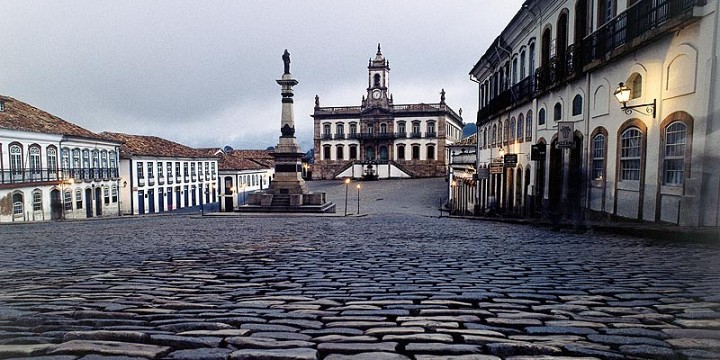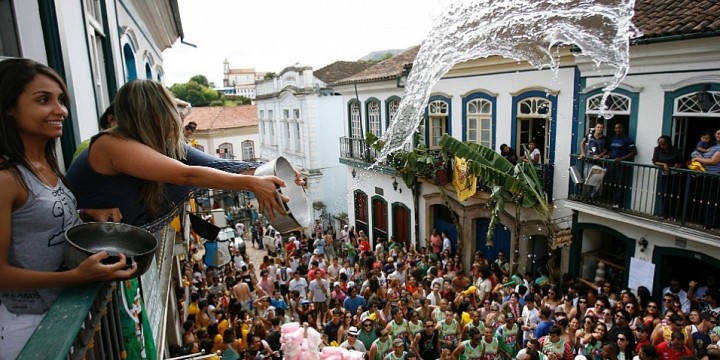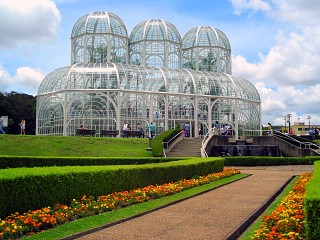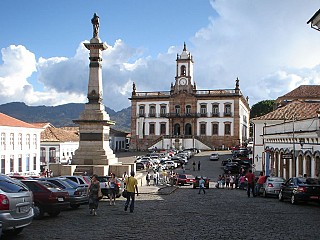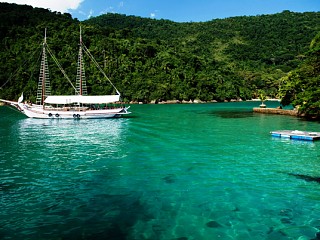The city of Ouro Preto (black gold) was founded and raised when gold was found in this area around 1698 and the city got her name because the gold had a black color. The gold fever attracted many people and as a response to this Ouro Preto became the largest city of Brazil within 50 years consisting of 110.000 people. In the 18th century about 500.000 kilos of gold got dug up from the mines, situated in the surroundings of the city. The heavy work was done by slaves. As a result of the enormous amount of money, that was raised by the gold fever, many with gold ornamented churches were build in Ouro Preto. The colonial baroque art was very popular during this time. The artist Aleijadinho, who had heavy handicapped hands, ornamented many churches with gold during this time, and is nowadays seen as one of the greatest artist.
At the end of the 18th century the amount of gold became rapidly smaller and this was the reason a lot of people left the city. It also preserved Ouro Preto from getting modernized, so a lot of the unique architecture of the old houses and the many churches remained. Ouro Preto is a national monument since 1933 and since 1981 it is under protection of the UNESCO.
Wander through the steep narrow streets with many fountains and visit one of the baroque churches. The church of São Francisco de Assis is the most famous, with many expressions of sculpture of the sculptor Ajeijadinho himself. Also the Santa Efigênia dos Pretos, who was build by and for the slaves, has some sculptures of this famous artist and two other famous artists. A walk to the surroundings of the city, in the direction of the bus station, will be rewarded with a beautiful view on the city. And of course it is possible to visit an old gold mine.

